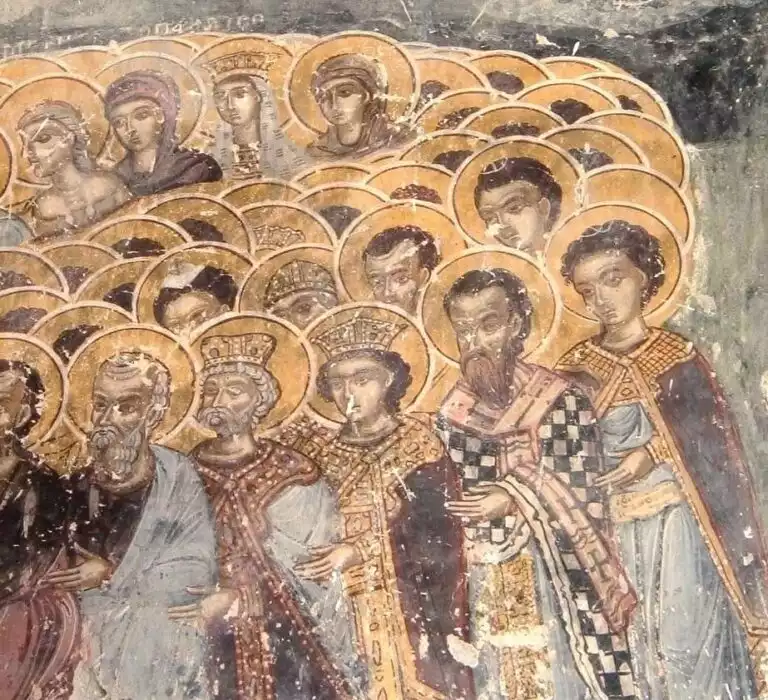
Hagiography, the study and composition of the biographies of saints and ecclesiastical leaders, is an enduring literary and religious tradition. Originating from the Greek words ‘hagios’, meaning ‘holy’, and ‘graphein’, to write, this genre has significantly influenced Christian literature and iconography. Historically, hagiographies served to inspire and edify the faithful, offering models of Christian virtue and piety.
In the early Christian era, hagiography primarily focused on the lives of martyrs and saints, often emphasizing miraculous events and moral lessons. As Christianity evolved, the scope of hagiography expanded to include accounts of monks, hermits, and ecclesiastical figures, each narrative contributing to the rich tapestry of Christian history and spirituality.
The Genesis of Hagiographic Literature
The inception of hagiographic literature can be traced back to the early Christian martyrologies and the Acts of the Apostles in the New Testament. These initial accounts set a precedent for later hagiographies, highlighting the virtues of faith, courage, and devotion in the face of persecution and adversity.
A pivotal moment in the development of hagiography was the transition from oral tradition to written accounts. This shift, evident by the 4th century, allowed for a broader dissemination of these edifying stories, reaching communities far beyond their geographical origins. The works of early church fathers, like St. Jerome, played a crucial role in establishing hagiography as a respected literary genre within the Christian tradition.
The evolution of hagiography was not merely a literary endeavor but also a reflection of the changing dynamics within the Church. As Christianity gained prominence in the Roman Empire, the focus of hagiographic narratives shifted from martyrdom to monasticism and ecclesiastical leadership. This transition marked a new era in Christian spirituality, where the emphasis was placed on the ascetic and contemplative life as paths to holiness.
In examining the early hagiographies, one observes a rich interplay between historical fact and spiritual idealism. These texts, while grounded in the real lives of their subjects, often incorporate elements of the miraculous and the divine. Such blending of the historical and the miraculous is a defining characteristic of the genre, underscoring the belief in the intercession of saints and the active presence of the divine in human affairs.
The enduring appeal of hagiography lies in its ability to connect the faithful with the exemplars of Christian virtue. Through these narratives, believers find inspiration, guidance, and a deeper understanding of their faith. As a literary and spiritual tradition, hagiography continues to be a vital part of Christian heritage, offering timeless lessons on virtue, faith, and the pursuit of holiness.
Hagiography in the Medieval and Modern Eras
The medieval period witnessed a significant expansion of hagiographic literature, reflecting the increasing veneration of saints within the Christian community. This era saw the compilation of vast hagiological collections, like Jacobus de Voragine’s “Golden Legend,” which became instrumental in popularizing the lives of saints. These works often blended historical facts with legend, enriching the Christian narrative with a tapestry of miraculous events and moral exemplars.
During the Renaissance and beyond, hagiography underwent a transformation, influenced by the burgeoning humanist movement. The focus shifted towards more historical accuracy and critical analysis, with writers striving to separate fact from fiction. This period also saw the emergence of hagiographies dedicated to contemporary figures, indicating the genre’s adaptability and enduring relevance.
In modern times, hagiography continues to evolve, incorporating diverse methodologies from fields like history, literary criticism, and theology. Contemporary hagiographers often engage in a nuanced exploration of their subjects, balancing the spiritual with the historical, and providing insights into the broader social, cultural, and religious contexts.
The Timeless Legacy of Hagiography
Hagiography, as a genre, has transcended its original purpose of merely recounting the lives of saints and ecclesiastical leaders. Today, it serves as a bridge connecting the past with the present, offering valuable insights into the evolution of Christian thought and practice. These narratives continue to inspire and guide individuals in their spiritual journeys, embodying the timeless virtues of faith, hope, and love.
References
- Attwater, Donald. “The Penguin Dictionary of Saints.” Penguin Books, 1995.
- ResearchGate. “Hagiography: Current and Prospective Contributions.” Accessed December 23, 2023.
- Heffernan, Thomas J. “Sacred Biography: Saints and Their Biographers in the Middle Ages.” Oxford University Press, 1988.
- Fordham University. “Legends in Hagiography.” Accessed December 23, 2023.
- Oxford University Press. “Oxford Bibliographies – Hagiography.” Accessed December 23, 2023.
- Gale Academic OneFile. “Hagiography in Historical Research.” Accessed December 23, 2023.
